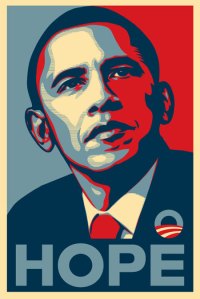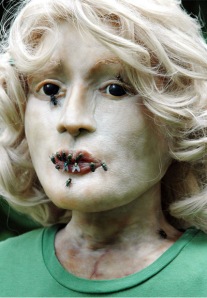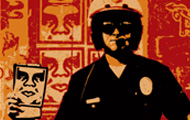Non-invasive test predicts risk of sudden cardiac arrest
I’m helping Cambridge Heart and Kogs Communications get out the good news that the company’s non-invasive test, which is administered much like a stress test, on a treadmill, accurately predicts the risk of sudden cardiac arrest–the leading killer in the US.
Here’s today’s release:
Tewksbury, Mass., March 3, 2009 – Cambridge Heart, Inc. (OTCBB-CAMH), today announced the publication of five articles supporting the use of Microvolt T Wave Alternans™ (MTWA) testing in a supplement to the March issue of the Heart Rhythm journal. Featured in the supplement is a comprehensive meta-analysis of 6,000 patients confirming the value of MTWA as a non-invasive marker of risk for sudden cardiac arrest (SCA).
The MTWA test, administered much like a stress test on a treadmill, was developed by Cambridge Heart as a diagnostic tool to help physicians determine a patient’s risk of sudden cardiac arrest — the leading cause of death in the United States.
The meta-analysis, conducted by a group led by Stefan Hohnloser, MD, FHRS, of the JW Goethe University Division of Cardiology in Frankfurt, Germany, assessed 13 MTWA clinical studies involving approximately 6,000 cardiac patients.
“The results demonstrate that MTWA testing is a consistently accurate predictor of sudden cardiac death and cardiac arrest in patients who do not already have implantable cardiac defibrillators (ICDs),” said Dr. Stefan Hohnloser. “These are the patients for whom MTWA testing is intended.”
The meta-analysis authors also conclude that:
· Patients who test negative for MTWA abnormalities are at extremely low risk (0.3%) for SCA in the next 12 months.
· MTWA testing can help doctors guide ICD therapy to appropriate patients and overcome the widespread reluctance of patients and referring physicians to accept ICD therapy.
· In clinical trials, appropriate ICD shocks are an unreliable surrogate endpoint for SCA and can skew results of risk stratification studies.
“This comprehensive analysis confirms the findings of numerous peer-reviewed studies which underscore the important role of MTWA in assessing a patient’s risk of sudden cardiac arrest,” said Ali Haghighi-Mood, PhD, Chief Executive Officer of Cambridge Heart.
The Heart Rhythm supplement also includes:
· A second meta-analysis of MTWA testing in patients with non-ischemic heart disease, authored by Gaetano De Ferrari, MD and Antonio Sanzo, MD of the Department of Cardiology at Fondazione IRCCS Policlinico San Matteo, Pavia Italy. Analyzing eight available trials involving 1,450 patients, the paper indicates that in this population negative MTWA results can help patients and their physicians decide whether ICD therapy may safely be avoided.
· An article by Michael J. Mirro, MD, Medical Director of the Parkview Health System Clinical Research Center in Fort Wayne Indiana, who describes how his center has incorporated MTWA testing into clinical practice to complement other methods for identifying and educating patients about the risk of SCA.
· A review of numerous studies concerning the underlying cellular mechanisms of T-wave alternans. The authors conclude that microvolt T-wave alternans is a marker of cellular changes that make the heart susceptible to sudden cardiac arrest. The review was carried out by Michael Cutler, DO, PhD, and David S. Rosenbaum, MD, of the Heart and Vascular Research Center at the Department of Biomedical Engineering at Case Western Reserve University in Cleveland.
· A review by Navinder Sawhney, MD and Sanjiv Narayan, MD of the University of California at San Diego that underscores the value of MTWA testing in patients who have had heart attacks but do not fall within current guidelines for ICD implantation.
The articles in the supplement can be found on the Heart Rhythm journal website at:
http://www.heartrhythmjournal.com/issues/contents?issue_key=S1547-5271(09)X0006-8
About Cambridge Heart, Inc.
Cambridge Heart develops and commercializes non-invasive diagnostic tests for cardiac disease, with a focus on identifying those at risk for sudden cardiac arrest (SCA). The Company’s products incorporate proprietary Microvolt T-Wave Alternans measurement technologies including the patented Analytic Spectral Method® and ultrasensitive disposable electrode sensors. Medicare reimburses the Analytic Spectral Method® under its National Coverage Policy. Cambridge Heart, founded in 1990, is based in Tewksbury, MA. The company’s Microvolt T-Wave Alternans™ (MTWA) test, developed by Cambridge Heart (OTCBB: CAMH), is based on research originally conducted at the Massachusetts Institute of Technology. http://www.cambridgeheart.com.
Statements contained in this press release are forward-looking statements for purposes of the safe harbor provisions under The Private Securities Litigation Reform Act of 1995. In some cases, we use words such as “believes”, “expects”, “anticipates”, “plans”, “estimates”, “could”, and similar expressions that convey uncertainty of future events or outcomes to identify these forward-looking statements. Actual results may differ materially from those indicated by these forward-looking statements. Factors that may cause or contribute to such differences include failure to achieve broad market acceptance of the Company’s MTWA technology, failure of our sales and marketing organization to market our products effectively, inability to hire and retain qualified clinical applications specialists in the Company’s target markets, failure to obtain or maintain adequate levels of third-party reimbursement for use of the Company’s MTWA test, customer delays in making final buying decisions, decreased demand for the Company’s products, failure to obtain funding necessary to develop or enhance our technology, adverse results in future clinical studies of our technology, failure to obtain or maintain patent protection for our technology and other factors identified in our most recent Annual Report on Form 10‑K/A under “Risk Factors”, which is on file with the SEC and available at www.EDGAR.com. In addition, any forward-looking statements represent our estimates only as of today and should not be relied upon as representing our estimates as of any subsequent date. While we may elect to update forward-looking statements at some point in the future, we specifically disclaim any obligation to do so except as may be legally necessary, even if our estimates should change.
The New Cambridge Observer is a publication of the Harris Communications Group of Cambridge, MA.


